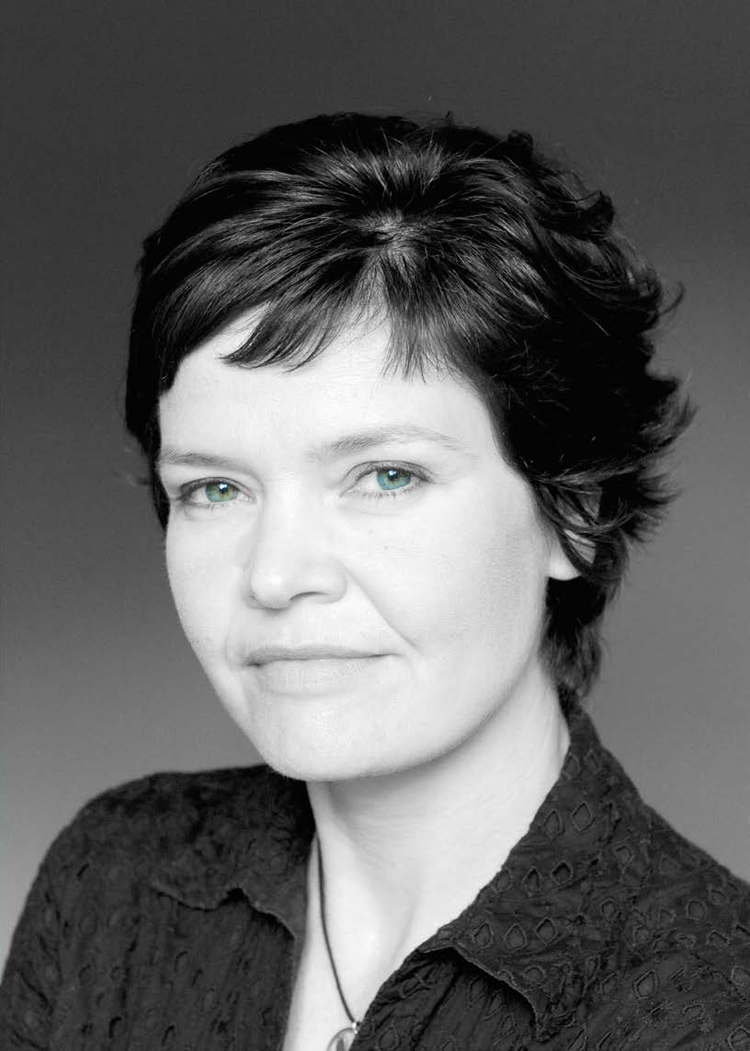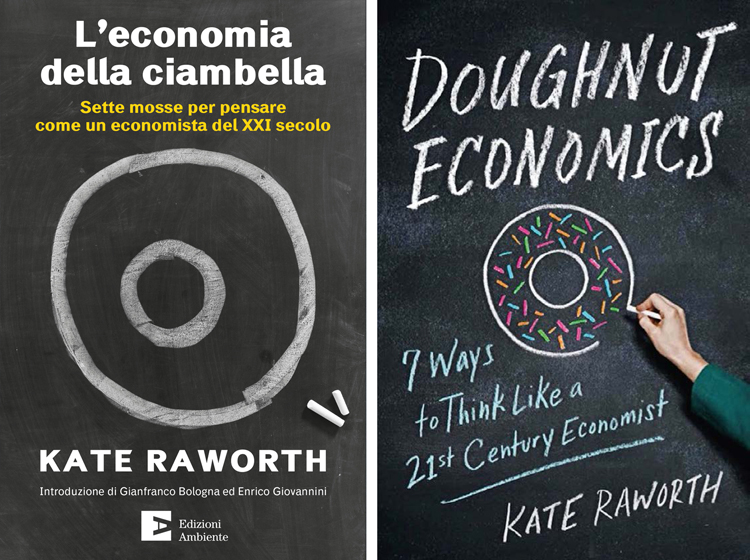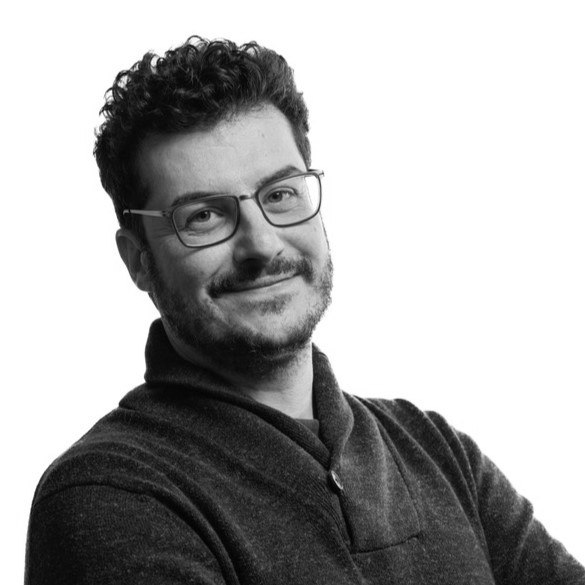
The greatest challenge for humanity in the 21st century is fulfilling all humanity’s needs, within the planetary boundaries. How can we ensure everybody the pursuit of happiness, end poverty, make injustice history while protecting the planet and avoid to overshoot our pressure on Earth’s life-supporting systems (soil, biodiversity, atmosphere) on which all the living beings on this planet rely on?
The linear, petro-capitalist, neoclassical economy has pushed our world on the brink of collapse. A new redefinition of political economy is very much needed. Over the last year, a lot of attention has been directed to the work of economist Kate Raworth, from the Institute for Sustainability Leadership. But don’t expect hyper-complex graphs and rules that build on traditional economy.
“To transform our economy we need to redefine its narratives and symbols. For this reason I suggest a new model based on the doughnut.” Seriously, you have read correctly. Doughnut. But beware: Kate Raworth is a no-nonsense thinker. Author of one of the most important book of this century, Doughnut Economics: Seven Ways to Think Like a 21st-Century Economist, Kate Raworth has been working on a way to deconstruct neo-classical economy for over two decades, working with the NGO Oxfam, researching on inequality, and authoring the Human Development Report for UNDP. And the doughnut has become the icon of a new economical paradigm.
Renewable Matter has met her in the hall of the ancient Palazzo Malvezzi, in Bologna, a true intellectual salotto, to understand how the traditional curves and lines of the neoclassical approach, based on determination of goods, outputs, and income distributions in markets through supply and demand, has totally failed to provide us the ultimate goal of life: a wholesome, happy, respectful existence. And how the doughnut can save us all.
How did you decide to use the doughnut to represent a new model of equilibrium at global scale?
“I know it sounds crazy, but I sat down to try to draw a picture of human wellbeing and the 21st century and it came out looking like a doughnut. I suggest readers take a look at the graphic. In the hole you can represent the shortfall of social foundation, from food and health care, water, education, housing. Whoever is out of the hole can live a life of dignity, rights and opportunity. At the same time we can’t go out of the doughnut, because there we are putting so much pressure on the planet that we begin to cross the planetary boundary (as explained by Johan Rockström, author’s note). We cause climate change, ocean acidification, and then we threaten the very living system that sustains us. So, the 21st century’s goal has to get everybody into this doughnut itself. But today we are far outside of it on both sides. We must live within the planet boundaries: economists in the century before us didn’t recognize the planetary life system on which we depend. To achieve this simply, we need a new economy that fits.”
 |
|
Doughnut Economics: Seven Ways to Think Like a 21st-Century Economist, www.kateraworth.com
|
Your book has an interesting take on neoclassical models: rather than understand the way we produce and consume it has created an ideology on how we should produce and consume, has imposed growth as Manichean goal, theory like the Kuznets curves as perfect physic’s laws. Therefore reality has become copy of model.
“We, humans, are deeply influenced by stories, and narratives about how the world works. We are also deeply influenced by pictures, so the pictures we draw in economics and the stories we tell, shape how we behave. Economics shapes the most fundamental story that we tell, a story about who we are. A story where it is said we are driven only by self-interest. This is not the truth, we have to tell ourselves the real story of who we are, and it will actually change who we have become.”
It is time to deconstruct the neoclassical and neoliberal economic models?
“There’s a huge responsibility that resides in the economists that tell us ‘who we are.’ This shapes who we become. Not only do we have to rethink the story of what the economy is. In mainstream neoclassical economics if I say to a professor ‘show me the biggest picture you have of the economy’ probably the biggest picture they can show is the Circular Flux diagram, drawn 70 years ago, by Paul Samuelson (his book Economics: An Introductory Analysis, first published in 1948, has influenced most of the macro-economics students in the world, author’s note). But it only shows what is monetized, it only shows the flows, it makes absolutely no reference to the living world. There are no references to materials and waste, it makes no reference to the ordinary people, the place where the people live. We have been running our economy by a story that is full of blank spaces and silences, on some of today most important issues. We need to redo the diagram and we need to write new stories to tell ourselves an imagine of the world the we actually want to create and a model of ourselves that is true to the full possibility of the human nature.”
Enterprises have always followed the bottom-line rule. How will the 21st century’s enterprises look like?
“There are 3 core criteria that shape an enterprise: its purpose, its ownership and its financing. And they are often tightly connected. In the 20th century the purpose of enterprises was to maximize shareholders’ return and maximise profit. ‘The business of business is business,’ was the mantra. The ownership was offered by shareholders, who never even step inside the businesses’ doors and the finance was managed through distant markets and always pursuing the highest rate of return. People only saw flow charts, never met the employees, maybe not even saw the product. This has helped lead us to where we are, pushing the environment and communities to the side, calling them ‘externalities.’ When you call something or someone an externality, you have already told how unimportant they are. We need businesses with living purpose: pursuing life, restoring the environment. The ownership needs to be rooted, perhaps among the employers or among shareholders who have a long term commitment to the purpose of the company. Finance needs to be committed not just to ‘return on investments,’ but also to the social and environmental value that this enterprise aims to create. So the question at the heart of 21th century’s business is how many benefits can I lure into it, so that we can give some away. It’s a question of generosity: “How can I help to tackle a social or environmental problem using my enterprise?”
Neoclassical models have been used by States to shape their political economy. How can the State transform its development model and measurements?
“Let’s keep it simple: the goal for the government is to create an economy that is regenerative by design, works in time with the living world, and it’s distributive, so it shares the value created. First, absolute, priority is to transform the energy system from fossil fuels to renewable energies. It would reduce energy costs, it would create jobs, and it would create innovation and a distributive energy system.
“Than it should change the full basis of taxation, stop taxing labour employers, don’t penalize companies for hiring people, tax the use of resources, and tax the use of virgin materials. This would transform the incentive for business, they would employ people and they would be efficient around the use of resources. Encourage the creation of employers’ enterprise, cooperatives, encourage householders to put their own solar panel in their roofs, encourage the use of the creative commons. We need metric to measure regenerative potential, cutting carbon emissions; we need metrics to show that the value is being redistribute among people. I believe it fundamentally needs to transform the finance, which has led us into a degenerative process.”
That’s a massive task, governments are usually afraid to change. How do you think change can be made?
“One of the reasons governments are afraid to take on the financial sector is because anytime they are put under pressure they threaten to leave. Which is what we are seeing in the UK. We need a set of governments working together, internationally. A group such as the European Union would be a very powerful starting point. They have to encourage new finances, creating green bonds, incentivizing and supporting banks enabling socially responsible investments funds. These kinds of measures not only shrink old finance, but also actively encourage and enable the new finance models.”
What types of economic metrics is needed for the doughnut economy?
“The measures we need are both in terms of the state of play where we are today, which is showed in the doughnut. The 21st century is going to be governed by natural and social metrics. Now we all understand water footprints, we can talk about carbon footprints. 20 years ago nobody would have understood what we are talking about, but today we are pushing forward natural and social metrics. It’s an exciting task for those who are creating the metrics to come up with new KPIs and national big data systems. We need to measure whether an economy is regenerative by design, so we need metrics that reflects the extent to which a business is truly part of the circular economy and whether it is distributive. I think the more we put attention here, the more we see the true sources of wellbeing. We will then realize that GDP, which is mainly the value of goods and services sold in a year, may go up, may sometimes go down in response to the shifts within regenerative and distributive economy, but will no longer be the main and only metrics.”
GPD doesn’t measure inequality, which has increased everywhere since the beginning of the century. Do you think wealth distribution has to become a central political issue?
“The interaction between how we distribute wealth and how we create a regenerative economy has a lot of trade-offs and tensions but also co-benefits that need to be explored. I believe it’s essential to redistribute incomes so that people who can’t afford housing, food, health care, have the access to all of these things; we need to assure that business models create circular supply chains. The question you ask is a complex one, with no easy answer. This is precisely where 21th century’s economists should focus their attention, to look for the synergies that potentially exist between redistributing wealth and creating a regenerative economy.”
In your opinion what should a real circular economy be?
“20th century’s industry was based on a linear degenerative design. Where we took earth’s materials, we made them into stuff we want, we use them for a while and then we throw them away. A take-make-use-lose system. We need to bend this linear economy around, so instead of using new resources we have to use them again and again. In two separate strains, the biological materials, that naturally regenerative themselves – this is what earth does – and a similar one for technical materials, like plastics, metals, and materials. We need to restore them, repair them, reuse them and lastly ultimately recycle them. So this is the essence of a circular economy and to have it functioning truly as an ecosystem within an economy it needs to be open-sources and open-materials based. In this way it doesn’t try to stay just within the limits of one company but it becomes an industry-wide system so that many companies are engaged together.”
Private businesses are usually afraid of opening sources environment. Can universities play a role in opening sources system?
“I believe that governments have a very important role to play in building up the capacity, because that’s where open sources work. So when public money is used to fund research and ideas, surely the resulting ideas and findings should be put into the public domain. If they were funded with public money then the results should be published with creative licences, not under copyrights, which are intellectual property.”
Therefore the transition to a circular economy must be supported by public research entities.
“That’s a way in which government can build up the capacity of the common knowledge, while creating digital platforms that citizens fill with data. In Brest, France, the local administration has created a digital knowledge platform, where citizens added all the information. It is a beautiful example of crowd-open source generated information. This can be done for the circular economy.”
Are you collaborating with the Ellen MacArthur foundation?
“Yes, they are beginning a new economical paradigm. They have quantified this idea that the economy exists within the environment. I worked closely with them, because we realized that together we are helping create a new narrative, a new story and a new picture of an economy that can work for the 21st century. They have been distributing 300 copies of my book to leading industrials. Their work on the circular economy is really strong in England but also internationally. Ellen has got passion and inspires creative innovation.”
Who will adopt the Doughnut model?
“There is a lot of interest around the world. In Stockholm the public administration is creating a brand new neighbourhood that will be called the Doughnut District. Companies have spontaneously endorsed the model. They are flattered by the power of the image.”
But to subvert strong eradicated beliefs you probably need to shape a new economy school, like the Chicago Boys did in the Seventies.
“The Doughnut is being taught in development studies, development economics, geography, architecture, and political science. The only ones that are resisting are the economists.
“If the Faculty of Economics continues to use models that every other disciplines already knows are outdated – because we saw what happened in the financial crash – either they make themselves irrelevant with their models or they jump into a new vision. We need to bridge the new economists with the mainstream ones. I am trying to do that at the Cambridge Institute for Sustainability Leadership aimed at executives of world leading companies. But it is a long winding road to change the economists’ world.”
Cambridge Institute for Sustainability Leadership, www.cisl.cam.ac.uk
Ellen MacArthur Foundation, www.ellenmacarthurfoundation.org
Portail des Savoirs, www.portail-savoirs-brest.net



